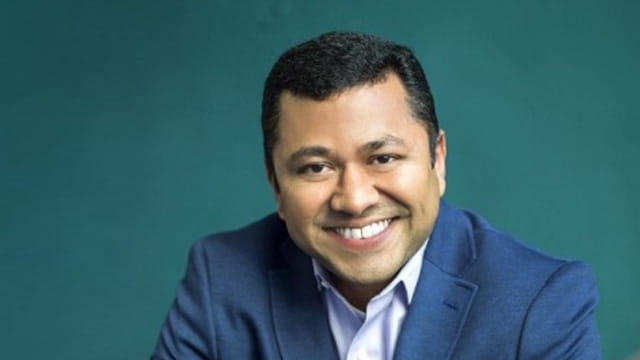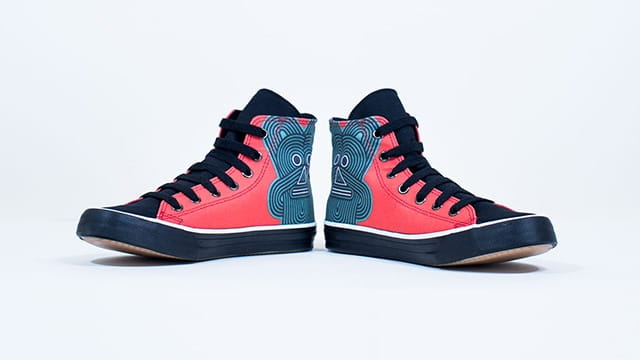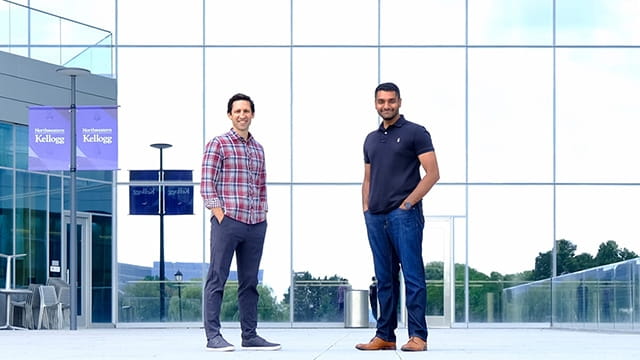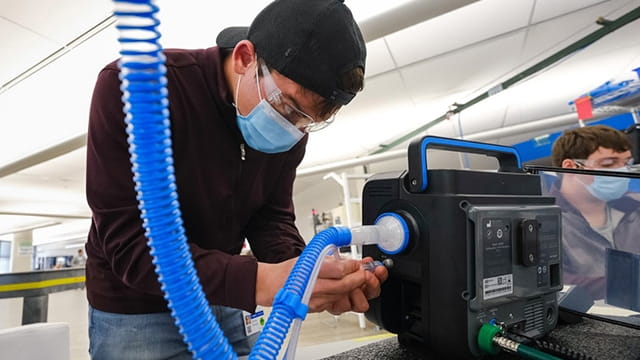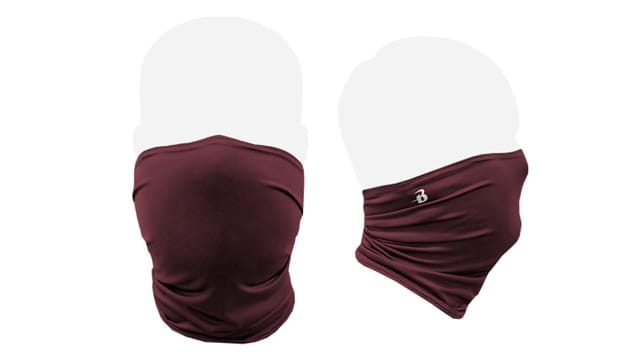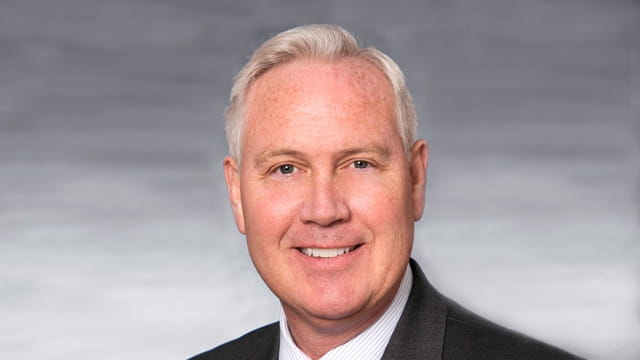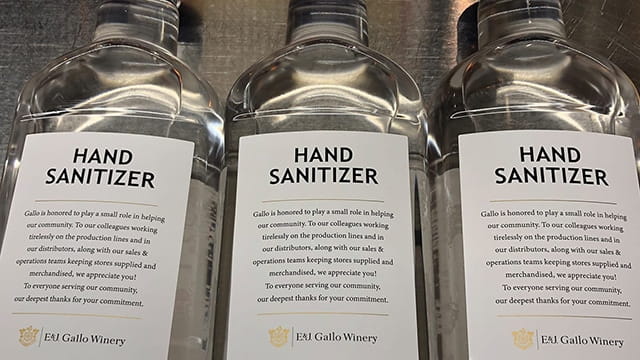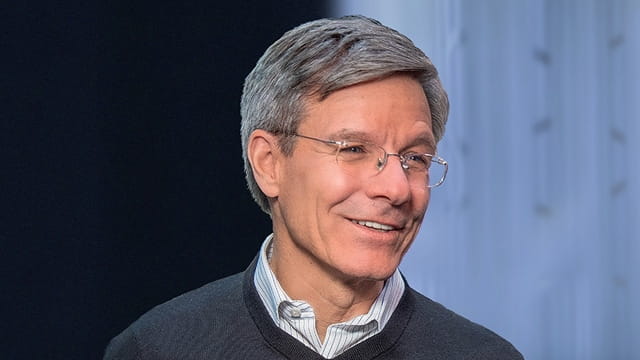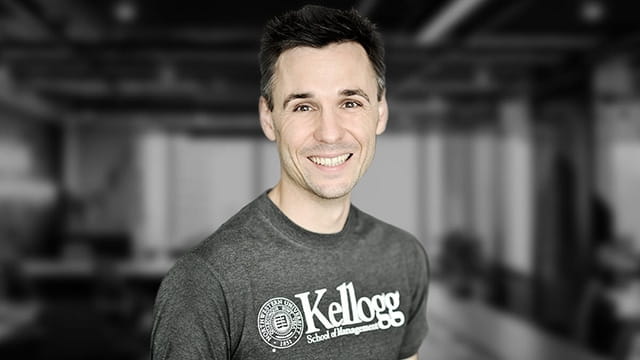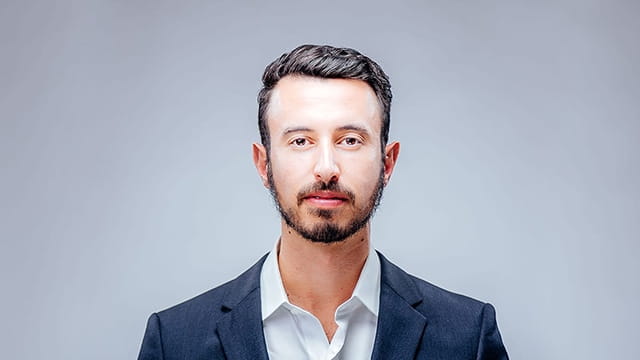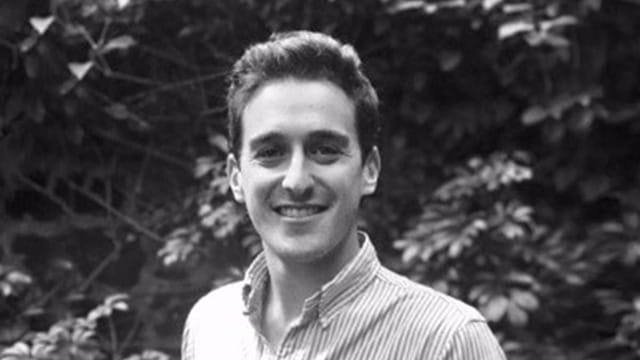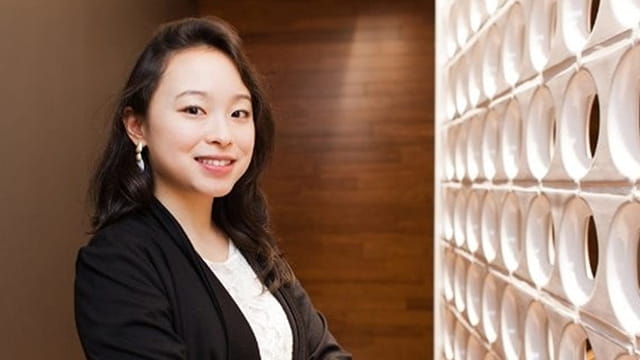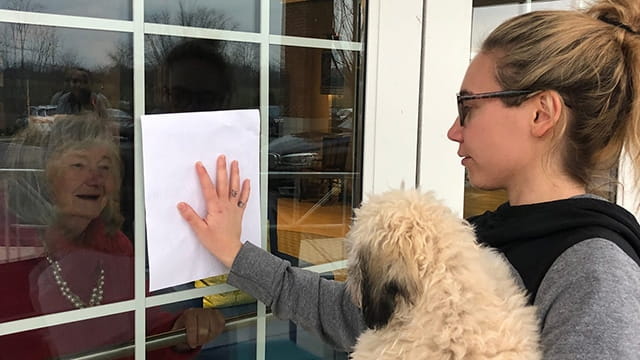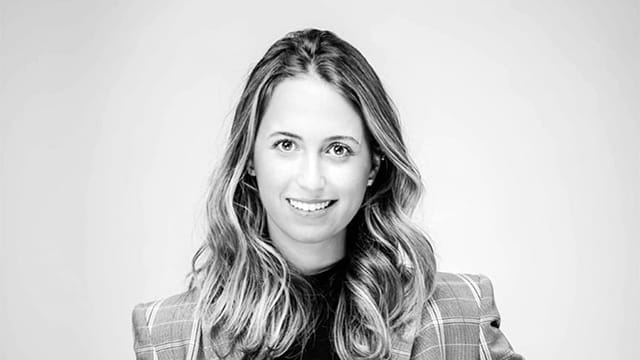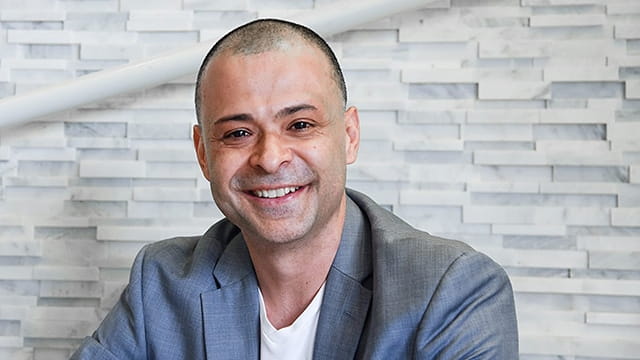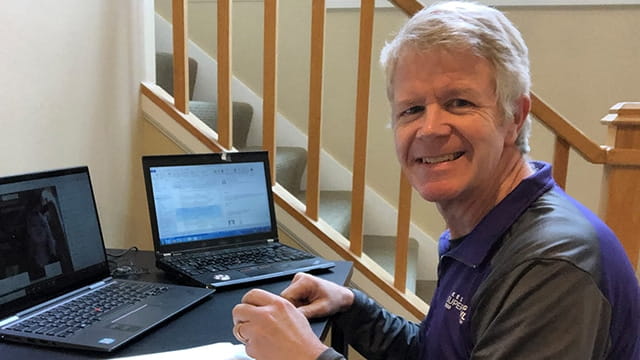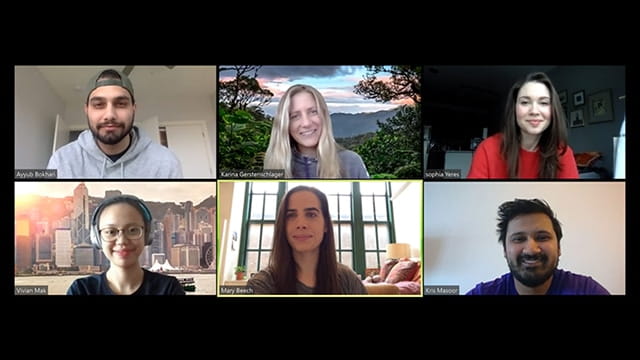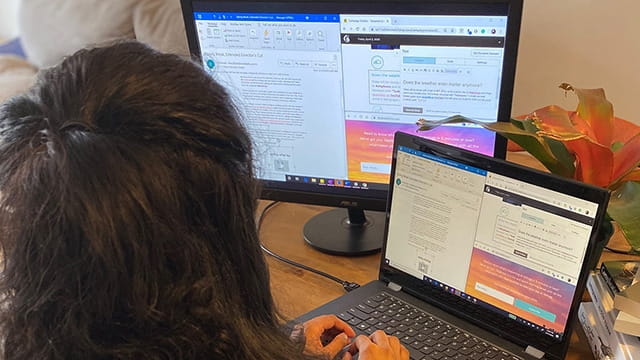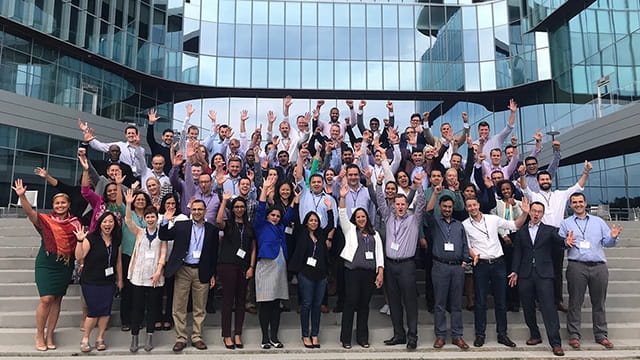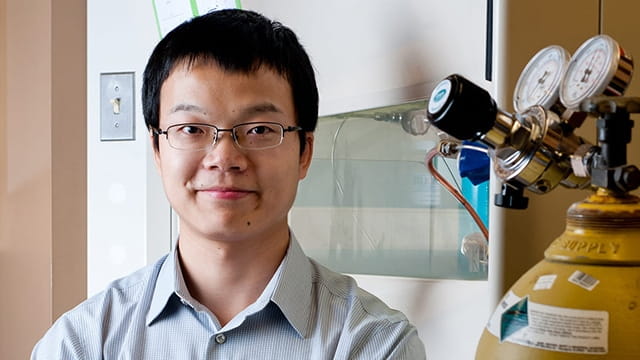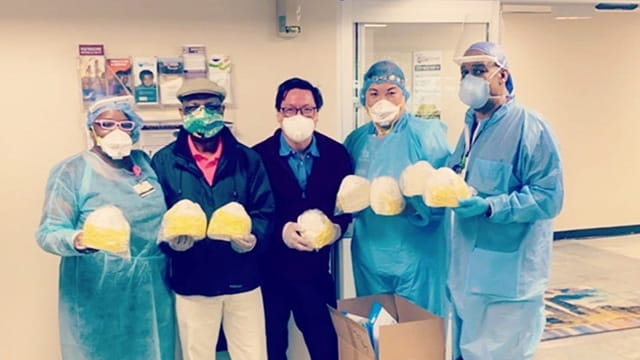Onward: A Retrospective of 2020 at Kellogg
When faced with massive disruption, how does a business-school community support its members while still innovating for the future? For Kellogg, the answers are in its values.
On Kellogg's campuses, everything changed in March 2020.
Throughout Asia and Europe, healthcare workers and government officials had already been responding to the rapid spread of the novel coronavirus. In Milan, Italy, the native home of Dean Francesca Cornelli, the virus was ravaging the country’s healthcare system. International students and alumni from China and South Korea saw their homelands experience similar shortages of medical supplies and overextended frontline workers as COVID-19 continued to spread.
While the coronavirus might have seemed far off from the U.S. in early 2020, many members of the Kellogg community already recognized the reality of this life-changing global event. On March 11, the World Health Organization declared the public health crisis a pandemic, and Northwestern University President Morton Schapiro announced an extended spring break to pivot to at least three weeks of remote learning for Spring Quarter classes across the University. Simultaneously, the makings of a national reckoning with systemic racism, privilege and bias were just beginning to come to the greater public's attention.
Much like the rest of the world, these were the themes that pervaded the Kellogg community throughout the rest of 2020, challenging the Kellogg community to put the values it promotes — empathy, collaboration, creativity and innovation — to the test like never before.
Chapters
- MARCH: COVID-19 hits home
A community is put to the test
- APRIL: Innovation & accessibility
The faculty, admissions and Exec Ed teams make meaningful pivots
- MAY: Jobs
Alumni and the CMC innovate through recruitment like never before
- JULY: The campus reopens
The hybrid experience takes shape at the Global Hub
- AUGUST: Learning & preparing
Kellogg readies itself for more students across campuses
- AY21: Building on what we learned
Leadership appointments drive innovation for the “new normal”
March
Protecting, then pivoting
The reality of the COVID-19 pandemic hit home after administrators learned of the first positive case in the Kellogg community among staff in mid-March. People who were potentially exposed to the infected individual were asked to self-isolate for 14 days to prevent the spread of the virus. Kellogg then engaged in a comprehensive deep cleaning of its facilities, using the CDC-approved product Oxivir TB, along with special equipment and fogging applications, to thoroughly sanitize the Global Hub and other campus spaces.
“There was just a ton of concern — we didn’t really know a lot about how it spread and how susceptible other people were,” says Mike Mazzeo, senior associate dean for curriculum and teaching. “It was about the time when we were almost ending the term for Winter Quarter, so there was a good deal of on-the-fly decisions, both reacting to the situation and trying to plan how to finish up the term.”

The Dean's Letter
“This is not a time for incremental change. This is not a time to focus on the small things.”
Francesca Cornelli / Dean
Kellogg administrators found themselves quickly reacting to guidance from national and state officials, along with University leaders. For instance, once Illinois Governor JB Pritzker announced limitations on gatherings of 50 or more people, the University recognized that in-person final exams were not possible. Mazzeo and other Kellogg administrators proceeded to follow up with every faculty member teaching in the Winter Quarter to ensure they could transition their exams to remote delivery.
After concluding the Winter Quarter, Kellogg had only 20 days to prepare to offer remote learning for the first few weeks Spring Quarter, but eventually it became clear virtual learning would last all quarter. This adaptation entailed not only figuring out how to use platforms like Zoom but also helping faculty adapt their curricula to be engaging in a virtual environment.
“We quickly realized that this idea of the professor talking into the screen for 90 minutes at a time and everybody listening, that wasn’t going to cut it,” Mazzeo says. “We were able to identify different tools that the Zoom platform has — sharing your screen, chat, Q&A, breakout rooms — all of these elements that were just really complementary to the way that Kellogg faculty like to engage students in the classroom.” Teams across the school such as facilities, Kellogg Information Systems and teaching support came together to make sure Kellogg could offer all of its spring courses with the same level of rigor and engagement as in-person classes.
“The initial concern was making sure that faculty and staff had what they needed to be productive from home and be secure while doing that. Then it became all about: How do we get the faculty comfortable teaching online?” says Raghu Katakam, chief information officer for KIS. “That was where the team spent an inordinate amount of time getting the faculty all the possible resources, doing one-on-one sessions with every single faculty member teaching that quarter, and making themselves 100 percent available to get them comfortable with teaching in the new format.”
To accommodate international students who were now living in different time zones, instead of canceling classes, Kellogg shifted some class times to early morning or the evening, so students could participate around the world.
“The choice was to offer fewer classes to our students or offer less of a learning experience, and we refused to do that,” Mazzeo says. “At Kellogg, we didn’t cut anything. Everybody just figured it out, and I’m proud of my colleagues for doing that and also the support we were able to put together.”
What virtual spring classes looked like
While staff and administrators put infrastructure in place to ensure virtual learning was possible, faculty quickly worked to alter their classes in a matter of three weeks.
In the Spring Quarter, Meghan Busse, a professor of strategy, taught The Economics of Energy Markets to more than 100 students across two class sections. Managing both the technology and creating an engaging environment for large groups of students was daunting for Busse and her colleagues.
“We were concerned about keeping students’ attentions in this remote medium. We were concerned about the pacing. How do we make something that’s going to be successful in this synchronous, remote environment?” Busse says. “For a lot of us, it was really frightening to lose the connection to the students and their faces.”
Before the course began, Busse and her family created a video showcasing her home office, where she would be teaching throughout the quarter. For instance, she explained how she would be speaking directly into the camera during lectures, instead of watching the participant boxes, which proved to help students focus on her content better. And since she relies heavily on the whiteboard for creating supply and demand curves in a physical classroom environment, she explained how she would use Keynote to replicate the experience. She included blank slides in her presentations, so students could draw their own diagrams as well.
“My aim was to try to make it as similar to the in-person experience as possible, which I think is really good,” Busse says. “I wanted it to be intellectually engaging in the way the physical classroom is intellectually engaging.”
Students in her Spring Quarter class who took previous courses reported that they were impressed by how she was able to translate the content and discussion into a virtual environment, just as well as in a physical classroom.
“As we are experiencing everywhere in our lives, we miss being in person,” Busse says. “The consistent feedback I got is that virtual class is less enjoyable in those interpersonal, human interactions, as expected, but students felt like they learned just as much and effectively.”
To help with the lack of interpersonal interaction at the time, Busse even hosted weekly happy hours to spend more time getting to know the students and giving them a space to interact with each other more.
Similar to Busse, Professor Suzanne Muchin was skeptical about virtually offering her popular course, “Selling Yourself and Your Ideas,” which relies heavily on in-person interactions between her and the 75 students in the class.
“We put in hundreds of hours redoing the course,” Muchin says. “There was everything from just learning Zoom … then there was the question of pedagogy, which was a whole other thing. Everything in my class, the whole entire theme of the class is show up, stand out and break through. None of which was possible. You could not show up. You could not stand out. You could not break through. So, I had to rethink everything.”
Muchin and her teaching assistants ended up trying out a variety of new ideas to make the course engaging in a virtual environment. She and her TAs made an effort to stay online after classes to interact with students interested in asking additional questions and continuing conversations.
Beyond simply exploring Zoom’s features, Muchin innovated how they were used to deepen connections. Via the chat function, for example, she asked students to share individual comments of support when their peers did stretch activities. During a branding exercise, students used it to help others develop personal narratives. Muchin would even have surprise guests drop into classes.
“We were not successful all the time. Some of our experiments were awkward, or some of our experiments glitched,” Muchin says. “But we just kept trying, and we were really committed to making the 10 weeks feel like something special.”
One way Muchin made the Spring Quarter memorable was offering a special edition of the course, just for fun, utilizing the TV show “Survivor.” More than 300 students joined every Sunday night to watch the show together and learn the lessons of “Selling Yourself and Your Ideas,” even hearing from past participants on the show.
One key factor in supporting remote course delivery was the implementation of virtual course moderators for each class. Kellogg administrators tapped into the knowledge of the Executive Education staff, which for years had utilized VCMs to assist faculty teaching its online programs.
VCMs played a pivotal role in assisting the faculty during classes by calling on students, troubleshooting technology issues and helping facilitate discussions, so faculty could concentrate on their instruction. Thirty-seven staff members volunteered to serve as VCMs in the Spring Quarter, supporting 122 class sections.
“The faculty were really wholehearted in putting effort into making the classes as good as they possibly could, and that was really heartwarming to see,” says Carly Loonan, a program assistant in academic operations who started serving as a VCM in the spring. “One thing I thought was cool was the students were really willing to try things out with us and give us feedback.”
To continue to implement feedback from students and each other, faculty, VCMs, teaching support staff and KIS members participated in nightly meetings called “salons,” where those who taught that day would share lessons learned during their classes, so those with upcoming classes could implement new techniques and troubleshoot issues.
“We adapted and adjusted and made things happen for them as a team,” says Ishrat Fatima, a project manager for KIS. “Everyone came together and quantified as a team to make sure teaching happened. That was critical, being able to listen and feeling empowered to come up with ideas and make decisions.”
Supporting students and the community
While much of the Kellogg staff was focused on supporting Spring Quarter learning, Kellogg's Career Management Center and Alumni Relations teams recognized that students needed new types of support since the onset of the pandemic, ranging from helping students find jobs and internships, some of which were unpaid and required stipends, and providing financial assistance for unexpected travel and technology expenses.
“Once we realized we had to be virtual and the pandemic was going to last longer than we anticipated, we knew we needed to create a new Student Assistance Fund,” says Lisa Guynn, senior managing director of alumni relations, annual giving and operations. “Internships started disappearing and becoming virtual, and job offers started disappearing, too.”
Kellogg's new Student Assistance Fund would call on alumni to support students by providing stipends to internship-seeking students whose placements could not pay the expected rate for their interns and assisting students facing currency devaluation and unexpected expenses with travel and technology needs due to the pandemic.
“We knew at the end of March that it was going to be a really challenging year because employers suddenly had to react to a significant change due to COVID. Employers began to scale back their plans for internships and quickly moved to virtual,” says Liza Kirkpatrick, managing director of the CMC. “There was an urgency to come up with a solution for what could have been the possibility of students who were doing the just-in-time job search not having an opportunity for internships.”
Meanwhile, Kellogg students were not the only ones who needed assistance. Businesses in the greater Evanston community were facing challenges, too. In March, Pritzker shut down bars and restaurants throughout the state to minimize the spread of the virus, but consequently, many local establishments ended up struggling to stay in business.
Linda Darragh, the executive director of Entrepreneurship at Kellogg, and Timothy Feddersen, a professor of managerial economics and decision sciences, took the call. Under their guidance, Kellogg announced an initiative that allowed Evanston business owners to set up a profile on StartupTree, a software provider that facilitates university entrepreneurship. Business owners could browse the Kellogg network of volunteers and schedule meetings to discuss their business challenges. Alumni provided one-on-one counseling on topics ranging from financial planning to HR management and marketing, and the business owners could also work with student volunteers on short-term projects, such as cash flow analysis.

The Evanston Story
Even in the midst of social distancing, the Kellogg family is leaning into the power of connection, bringing the school’s mission to Evanston business leaders and beyond.
April
Planning for future classes
While much of the Kellogg community was working on meeting the needs of its current students, the admissions team needed to think about how it would continue to yield diverse, high-quality incoming classes.
By the end of March, Round Two applicants to the Full-Time MBA program had been admitted. Normally, admissions staff would call each admitted student to welcome them to Kellogg, but with staff now working fully remote from home, the team needed to become creative in informing the applicants.
"We welcomed the second round admit group by Zoom with Francesca welcoming the entire group personally, which had never been an opportunity presented before when we called all applicants individually," says Kate Smith '98, assistant dean of admissions and financial aid. "Zoom enabled them all to meet her, which was a wonderful way to welcome them amidst the onset of the pandemic."
Right away, the team then began thinking about the experience of applicants applying for admission in Round 3 for the Full-Time MBA Program, along with Summer and Fall Quarter entry for the Evening & Weekend MBA Program. Immediately, the team decided to extend application deadlines to ensure students had more time to complete their application materials as they dealt with the challenges at the time.
However, it soon became clear that students could not all complete the GMAT, GRE, TOEFL and IELTS exams as testing centers shut down around the world. Since test scores have always been only one component of Kellogg's holistic evaluations process, admissions made the decision to waive the testing requirement for these applicants given the circumstances.
"The reason to do it was the lack of equal access," Smith says. "Even as the test was early in its online mode, there were a lot of challenges with it. Hearing that feedback in terms of lack of access and understanding the circumstances facing applicants, we wanted to do that."
The admissions team also wanted to promote accessibility for the signature Day at Kellogg event for admitted students, which needed to become virtual due to travel and gathering restrictions. As a result of hosting the event virtually, attendance soared by more than 200% compared to last year, as more students from around the world could participate in the event without time or financial constraints. DAK utilized the Zoom platform to feature various alumni panels, breakout rooms and presentations.
To ensure that Kellogg could continue to yield a strong number of international students, the admissions team worked with students individually on visa issues, and Kellogg quickly innovated, pivoting to embed the internship experience into the curriculum for students unable to travel to the U.S. That way, students could still be eligible to work in the U.S. for internships, despite taking classes virtually. For admitted students with extenuating circumstances caused by the pandemic, the team offered greater flexibility with allowing one- and two-year deferrals.
As a result of these adjustments, applications to the Full-Time, Two-Year MBA Program's class of 2022 ended up increasing by 54% year over year, and Kellogg was able to welcome its largest Full-Time class ever.
"The caliber of the applicant pool was exceptional," Smith says. "We were able to problem solve in a way to help more students get here than we ever anticipated, and thus, we have this great, amazing class, but it’s larger than any prior year ever."
Also contributing to the application momentum was the launch of the new Kellogg Future Leaders deferred-enrollment program in January, where senior undergraduates and master's candidates with no previous work experience apply to join a future MBA class two to five years out. "The quality of this new group of applicants was exceptional,” says Smith of the innovation this year enabling Kellogg to connect with a strong talent pool at the onset of their careers.
Faculty thought leaders join the global conversation
By April, it was clear that the pandemic was going to remain a pervasive challenge, requiring business and individuals to completely adapt and innovate to the new circumstances. Kellogg faculty with a wide range of expertise began sharing their pandemic-related insights with a global audience through media outlets like the Wall Street Journal and New York Times.
"Our faculty offer diverse and eclectic perspectives," says Taryn Tawoda '19, senior director of external communications. "Their expertise ranged from how consumers are spending their stimulus checks to tips for marketers to navigate the pandemic to how to manage your personal relationships."
Right away, faculty joined the dialogue around the pandemic, such as discussing how the hospitality industry's involvement in offering rooms for COVID-19 isolation could help the local economy, featuring insights in MarketWatch Chicago from Efraim Benmelech, Carola Frydman and Dimitris Papanikolaou, all professors of finance.
Starting in March, Kellogg Insight cleared its editorial calendar to make way for insights on the pandemic from faculty. Megan Kashner, a professor of social impact and public-private interface, was one early contributor, offering ideas for how businesses could help their communities during the crisis.
"Normally, we’re interested in research that might take years to put together. Or we’re offering perspectives, opinions and advice, and this is the kind of stuff that can have a really long shelf life. That’s our bread and butter," says Jessica Love, editor in chief of Kellogg Insight. "We don’t normally chase the news, but there was nothing but the news."
Just days later came new research, including an analysis of the optimal response to the pandemic in order to save lives and support the economy, led by Sergio Rebelo, a professor of international finance, and Martin Eichenbaum, a professor of economics. Finance professor Scott Baker was also quickly able to leverage real-time stock market data and household spending data to capture how investors and households were responding in the pandemic’s earliest days.
"I think what was most impressive was that by the end of March and early April, we already had new original research from data that had basically been collected since the beginning of the pandemic or on concepts that were now suddenly a reality," Love says. "I think this is one of the first opportunities that faculty have had where they have these existing databases that they’re tapped into, and then crisis hits, and they see it in their data."
The quality and volume of insights coming from faculty led to the creation of a page on the Kellogg Insight website dedicated to the coronavirus crisis, and traffic to the website doubled in the month April.
"I think in part because of how willing our faculty were to speak to this moment, both from a leadership perspective and from a research perspective, we had insatiable demand for this content," Love says.

The Faculty Story
Go behind the scenes with faculty to understand their mindset in changing gears and focusing research on the economic and social effects of the pandemic.
Expanding virtual learning to the greater community
As Kellogg Executive Education faced the need to postpone its spring courses due to travel restrictions caused by the pandemic, the team began thinking of ways to continue engaging with their participants until courses could resume.
"Our sense was that people were going to be grappling with how to respond to and recover from a crisis the likes of which we’ve not seen in many generations" says Holly Raider, managing director of Executive Education. "People were not going to be traveling to our campus for programs. They were not going to have a lot of time for professional development because of what was going on in their businesses, families and communities."
Before converting their highly specific custom programs and open enrollment courses for live virtual experiences for the Fall, Winter and Spring Quarters, the Executive Education team decided to focus on how Kellogg could be helpful to the greater community at the current moment. What started out as an idea for eight to 10 live webinars for Executive Education participants became 25 weekly webinars that ran from March through September, attended by thousands from around the world. Interest in this webinar series spurred other online learning offerings for the Kellogg alumni community like the Conversations with Distinguished Alumni series, featuring fireside chats between Dean Cornelli and alumni like Edith Cooper '86, former partner and global head of human capital management for Goldman Sachs, and Ivan Menezes '85, chief executive officer of Diageo.
"Early in the pandemic, webinars proliferated. It seemed that everyone was offering them with varying levels of participation and success," says Tom O'Toole, associate dean of executive education. "Our webinar series not only was successful from the start, but stood out, grew its attendance, maintained a very high level of content quality, covered an increasingly broad range of subjects and raised its profile as the series progressed for months."
Raider adds, "The execution of the webinar series reflected Kellogg’s core values. The fact that we invested in doing something relevant, timely, of service and consistently every week for our community was very Kellogg. There were many collaborators from around the school who helped shape it. It was collaborative and communal to the core."
Many faculty who led a webinar session had not done a live webinar before, and they committed to significant preparation to maintain the high quality of the webinar series. The Exec Ed team facilitated after-action reviews following each webinar to be able to apply improvements to subsequent webinars.
“Faculty involvement grew over time, and the growing range of faculty participants invested their time and effort to create outstanding webinar content during a period when everyone was challenged in many ways,” O’Toole says.
Considering that attendance in the webinars far exceeded industry standards for free webinars, there was great interest in continuing the series, which will now be hosted by Kellogg Insight as “The Insightful Leader Live.”
Student and Alumni Businesses Address the Pandemic
May
Innovating to support students' jobs searches
The economic downturn spurred by the pandemic caused Kellogg's Career Management Center to consider new ways to support students as they reported struggles finding internships and jobs, along with experiencing a few rescinds and delayed start dates for received offers. And of course, many opportunities were completely changing structure by going virtual.
"Students had to get really smart about how COVID was affecting their desired industries," says Liza Kirkpatrick, managing director of the CMC. "We saw things like transportation, hospitality, travel and entertainment get hit really hard."
As of mid-March, about 200 first-year students were still seeking summer internships. With the urgency to find opportunities by the end of the Spring Quarter in early June, the CMC decided to launch a Hire Kellogg campaign. A similar campaign was utilized 2008-09 during the last major recession. The campaign called on the entire alumni community to leverage their networks to find potential employment and internship opportunities to share with Kellogg talent, including both students and alumni.
"It was a great partnership, and one of the best things that came out of this was that working really closely with Alumni Relations led to such great results," Kirkpatrick says. "Even when we did the campaign in 2008, I didn’t see the willingness to engage in the way that we had this time. It was phenomenal collaboration across the school, different departments and faculty members."
Particularly, alumni on the Kellogg Alumni Council and Global Advisory Board spearheaded Hire Kellogg outreach and provided significant funding to the new Student Assistance Fund, which provided internship stipend support, along with hardship assistance for currency devaluation, plus travel and technology expenses.
"The alumni response was strong right off the bat," says Lisa Guynn, senior managing director of alumni relations, annual giving and operations. "Alumni had a vested interest in our students, and it showed through their generous support at all levels."

The Recruiting Story
Learn how four students from three countries dug deep into the resources provided by the Career Management Center, Student Assistance Fund and HireKellogg campaigns to find dream jobs in 2020.
Alumni ended up raising more than $1.2 million for the Student Assistance Fund by early June, with 83 percent of funding supporting 98 stipends for Full-Time students. The stipends were offered to students whose summer employers could not offer sufficient compensation. By pairing the stipend offering with leads from Hire Kellogg, students could also work with potential employers to create new opportunities or further pursue opportunities that had been frozen.
"COVID opened our eyes to the many companies that offer amazing internships for students but can’t always afford to pay market rate, and the stipends helped with that," Guynn says. "So, we’re going to continue offering stipends, so our students have an opportunity to work in those fields that really interest them but might not have the resources."
The CMC also dedicated a lot of time to helping international students find opportunities in the United States or source opportunities with alumni in their home countries.
For the graduating class, employment outcomes only slightly trailed behind previous years' outcomes, despite the extremely challenging circumstances in the job market.
Executive Education live virtual programs
Learn from our esteemed faculty in a rich, interactive digital environment, and equip yourself for a new, dynamic business landscape
JULY
Bringing students back on campus
As soon as commencement wraps up in June, Kellogg pivots to the Summer Quarter, where one-year MBA and MMM students start their Kellogg experiences. Since the Summer Quarter always involves far fewer students on campus than in the fall, school leadership decided to pilot hybrid learning in the summer, which would include both in-person and virtual learning.
"We made the evaluation early that we’d have the best chance to have the most people come to Kellogg if we made the commitment to do the best we could to have some in-person component to the experience, offering a substantial in-person experience," says Mike Mazzeo, senior associate dean for curriculum and teaching. "We decided to embrace the idea that this was an experiment. We’re doing something different and new. We told the students straight up, we can’t do this without your participation."
Guided by regulations from government and University officials, Kellogg's facilities team worked with Kellogg Information Systems to prepare classrooms to have the instructor in person, along with a limited number of students, all of whom were socially distanced and wearing masks. The rest of the students would attend class on Zoom.
The Global Hub offered features to minimize risk to those in the classroom, like the capability of circulating fresh air into the building every 15 minutes, a benefit of the Hub's LEED-platinum certification. The building's outdoor terraces were utilized for socially distant small gatherings.
"There was trial and error. We experimented. We tried stuff. If it didn't work, we’d change it," says Will Garrett '90, Kellogg's chief operating officer. "Just the creativity and the problem solving showed by faculty, staff, everybody, was huge, and we had enough time to do it in a building that was made to do it and with a class size that was manageable."
Logistically, the facilities team coordinated appropriate signage throughout the building, assigned socially distant seats in case contact tracing was needed and staggered class start and end times to minimize traffic in the building.
"If we learned one thing, it was making sure we had really well-crafted, well-organized messaging to the students about what was important, why it was important to have these protocols and guidelines for their safety and why it was important for them to follow the guidelines," says Dan McCrudden, senior director of facilities. "They got that, and these 150 students were excellent all summer. They really followed what we asked them to do to keep not only themselves safe, but our faculty and our staff safe."
Before even entering the building, Kellogg community members were required to check in with an app that the KIS team built in less than a month, which would enable people to evaluate their daily symptoms before getting a badge to enter the building.
Opened in March 2017 as part of the school's seven-year transformation plan, made possible by donor support, the Global Hub also was equipped with advanced equipment, providing the technology capabilities necessary to teach for students in-person and online.
"We had this brand-new building, which was built with the thought to have spaces be very flexible and to have the latest technology, which included built-in cameras, microphones and speakers," McCrudden says. "This made the conversion to the hybrid modality much easier for faculty, and not only the in-person students, but also for the remote students."
Hybrid teaching
Once students and faculty were set up in the classroom, the school needed to figure out how to make the learning experience engaging for audiences that were both in person and on Zoom.
"We got students' feedback. We discussed it with them. We implemented some new things," Mazzeo says. "We told them that we’re going to continue to try new things, and we were going to survey the heck out of them to see what their reaction was."
For example, one of the common issues encountered was students on Zoom reporting being unable to hear students in the classroom answering questions. So, teams tried out various solutions like having the professor switch control of the discussion on Zoom to a student in the classroom, who would directly speak into their laptop.
"What was great about it was the students embraced this idea that it’s not this polished, perfect delivery — that’s an unattainable goal — let's instead try to figure out what works for all of us," Mazzeo says.
Virtual course moderators still played a major role in making sure classes went as smoothy as possible for all students. Thirty-three VCMs supported 53 sections over the Summer Quarter, and by the fall, 59 VCMs would support 226 class sections.
The teaching support team developed a mentorship program where more experienced VCMs could be resources for new ones, and KIS created a Microsoft Teams chat monitored all-day to answer real-time questions from VCMs.
"It was a lot figuring out ways to keep the conversation going and making sure that voices were being heard, If students had questions, they could ask me, and I could help troubleshoot things," says Bobby Ganzer, a program assistant in degree operations who served as a VCM for Mazzeo's course, Strategies for Growth. "It was a really cool opportunity to be a part of that and to be able to develop some professional development skills of being able to interact with faculty and be more in that academic space."
For Jeroen Swinkels, a professor of management policy and strategy, he found success in putting a clause in the syllabus for his Business Strategy class asking students for feedback and flexibility as they learned the hybrid model together.
"The first class I was truly open about the degree to which this was a learning experience, that I needed feedback and that we’re going to learn our way through this," Swinkels says. "The flexibility is a thing I will keep going forward. It was really liberating."
Swinkels would give students three to four days' notice in the event a reading was going to be eliminated from the syllabus. This allowed him flexibility to go more in depth on topics or incorporate more current materials, like news happening at the time around LVMH, the French conglomerate specializing in luxury goods.
"If the students were really actively and productively digging into an article beyond what I’d expect, in the old days, I’d have to cut that and bring it to a stop because I have a schedule to keep," Swinkels says. "In this iteration, if they find something is super interesting, and they want to work it through, we would just do it ... I found it much easier to weave in current materials."
Throughout the quarter, Swinkels made adjustments to his course to ensure both in-person and virtual students felt equally heard during discussions.
“The big learning point for me, even though I’ve been teaching for a long time, was to have the willingness to just experiment in class,” Swinkels says. “This was a really fun opportunity to innovate.”
Offering the signature Kellogg co-curricular experience
Over the summer, the student life team is in charge of welcoming a new class of one-year MBA and MMM students and providing meaningful co-curricular opportunities. In order to orient the new students to Kellogg, the team hosts the Complete Immersion in Management.
"We got really focused after COVID hit on what we wanted the orientation experience to be, understanding that it couldn’t be the same," says Minya Nance, director of strategic student experience. "CIM is all about the energy and meeting new people. In a space where it’s less capacity, and you can't have everybody in a room, and people are participating virtually, that same level of energy and connectivity is really difficult to achieve."
In order to accommodate students participating virtually around the world, CIM offered synchronous programming in the mornings and asynchronous, small group activities in the afternoon to optimize flexibility in scheduling. Activities included breakout rooms with a mix of in-person and online students.
"We wanted to make sure, wherever you were located, you felt like you were a part of the community," Nance says. "Students said the speakers did such a good job making it feel like they were talking directly to them even when virtual. It really got them excited and jazzed for their Kellogg experience, even though some were participating virtually."
In the past, new students are typically divided into cohorts of around 70 students to build more personal relationships with peers. Given the circumstances, the student life team recognized that groups needed to be even smaller for meaningful engagement, so the team created the idea of pods — much smaller groups of seven to eight students — within each section.
"The pods gave students the chance to work in small groups where everyone was in the same situation to make some connections," says Fran Langewisch, assistant dean and director of student life. "That helped set a tone moving into the quarter of being intentional and reflective."
Throughout the summer, the student life team made sure to facilitate safe socialization opportunities by taking advantage of outdoor tents where students could get to know their classmates in a socially distant environment.
Your gift matters
Help drive innovation and growth at Kellogg and around the world.
August
Attracting applicants in a virtual world
Throughout the summer, Lance Bennett, director of diversity admissions, would typically be traveling around the country to host diversity events and attend seminars with partner organizations to share information about Kellogg with diverse talent. But in the face of the pandemic, Bennett and the admissions team needed to pivot all of their admissions events to a virtual platform, while maintaining a highly engaging experience.
"We have always tried to make our events as personal, intimate and comfortable as possible, so not only could we share information about Kellogg, but also provide an environment where the prospective students would feel comfortable asking the questions they would need to be successful," Bennett says. "We had to obviously shift because we couldn’t do anything in person, but the goal was still to create that same environment, so we capped the number of participants at each event, but we also increased the total number of events, so it expanded our reach."
By the end of the summer, the diversity team hosted and attended 23 diversity events and seminars, reaching more than 1,500 prospective students. In total, the admissions team hosted 197 admissions events with 7,715 attendees.
"We really try to be open and honest, creating authenticity in the actual session. In the openings, I acknowledged what is happening in the world," Bennett says. "The event is, of course, to talk about Kellogg but acknowledging there are other things impacting us all was important to me. I hope this helped those attending understand we’re not tone deaf and freed them up to ask their real questions in the small groups to get a deeper understanding of Kellogg."
The team engaged with partner organizations throughout the summer, including the Posse Foundation, JumpStart, Reaching Out MBA, the Riordan Programs and Management Leadership for Tomorrow.
"Those organizations have diverse talent, so we’re going, meeting and building awareness with that diverse talent about who we are at Kellogg," Bennett says.
Virtual admissions events will continue through the fall, including a fireside chat with Bernard Banks '08, associate dean for leadership development and inclusion, and an event with Nicholas Pearce '10 '12, a professor of management and organizations. Affinity clubs like the Hispanic Management Association, Women's Business Association, Black Management Association and Pride@Kellogg will continue to host student chats and alumni panels for prospective students.
Before and after: a typical classroom in the Global Hub with the hybrid-learning setup.
Preparing for more students on campus
At the conclusion of the summer quarter, Kellogg leadership began preparing for how to continue the hybrid learning experience through the fall, but with many more students.
"As we planned our transition to a much larger student group, we knew we must continue to ensure we communicate regularly with all incoming students about the safety protocols in place and why their cooperation is integral to making sure this is a success," says Dan McCrudden, senior director of facilities. "We had great leadership from the school's leaders committed to supporting the hybrid experience and supporting the dedicated faculty and staff that were willing to work hard to learn the new protocols and guidelines to guarantee a safe and successful return."
A cross-functional team of staff and faculty will continue facilitating key components for safe in-person learning, including staggering classes by cohorts, assigning seats and managing traffic in the buildings.
The University developed a new symptom checker app, which will be used to allow entry into buildings, and the greater University coordinated COVID-19 testing for all incoming students before starting their programs. In an effort for transparency, Kellogg is sending out a weekly update to its community indicating if there are any new positive tests and any plans for changes in operations.
Students and Alumni Reflect on the New Normal
AY21
Looking to the future
Despite all of the challenges of the previous six months, Kellogg prioritized maintaining its signature level of excellence in the learning experience, and even launched new programs during this time.
In advance of the new 2020-21 academic year, Kellogg announced a partnership with the McCormick School of Engineering to launch MBAi, a new, accelerated joint degree program centered on the intersection of business and technology management. The program intends to respond to the growing and global need for leaders that can spearhead strategic, business-driving innovation while understanding the complexities and nuances of the technologies that enable it. The first-round applications for the inaugural class are already underway.
As for virtual events, they are here to stay, at least in some form, at Kellogg. Admissions, Executive Education and the Career Management Center plan to offer online recruiting, educational and admissions events into the fall and beyond.
"How do you create a very personal process in a virtual world?" says Liza Kirkpatrick, managing director of the CMC. "We are laser focused on how do we make it easier for employers to engage with Kellogg students if they have opportunities."
With 60 percent of fall classes having an in-person element, the next phase will be hybrid classes with less restrictions, and eventually all in-person classes, once health and safety guidelines permit.
Kellogg entered the 2020-21 academic year with new leadership to guide the school through these times requiring greater levels of innovation and adaptability than ever before. New appointments include:
- Bernard “Bernie” Banks '08, associate dean, leadership development and inclusion
- Sunil Chopra, deputy dean
- Paul Christensen, chief transformation officer
- Janice Eberly, senior associate dean, strategy and academics
- Nicki Nabasny, chief innovation and strategy officer and chief of staff
- Thomas O’Toole, associate dean, Executive Education
- Mohanbir Sawhney, associate dean, digital innovation
"All of these efforts took our culture of collaboration and devotion to the mission of the school," says Mike Mazzeo, senior associate dean for curriculum and teaching. "The faculty and the staff were not going to give up in making sure the students learned, making sure that the students got jobs, everything that was related to the students. The zeal with which everybody embraces our mission is essential."
He adds, "We have a lot of talent, and that also showed up here … but there are a lot of people that have talent. If you combine that talent with collaboration and mission, that’s when you can really achieve something extraordinary."
As Kellogg moves into the Winter Quarter, the community will continue to collaborate in diverse teams to address tough issues, innovate through disruption and leverage empathy for equity and impact. "Don't put brakes on yourselves," Dean Francesca Cornelli reminds us. "Now is not the time to avoid mistakes and do everything by the book. If you unleash your creativity, you can accomplish so much. The power of the creative mind is unstoppable."
